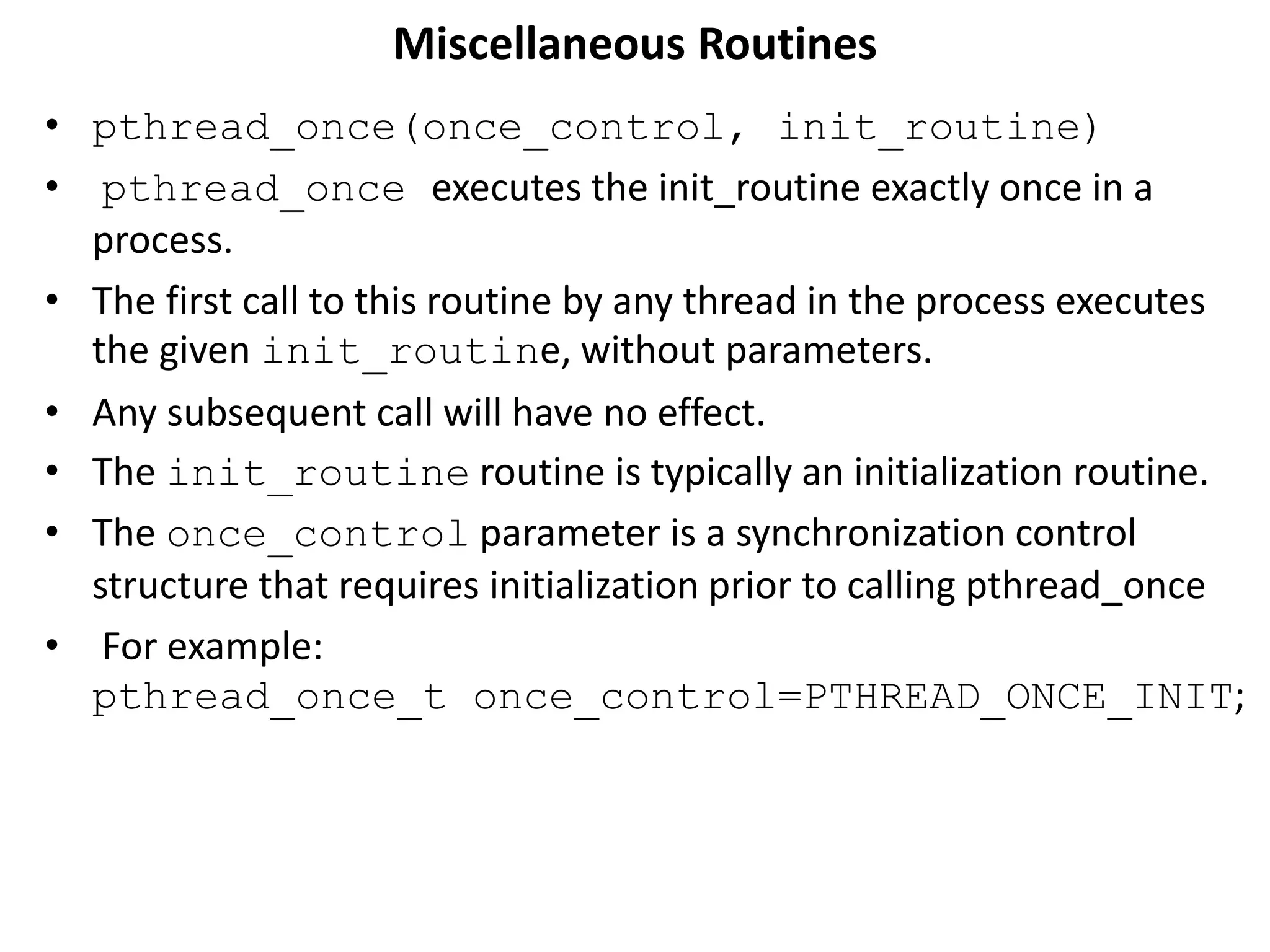This document provides an introduction to POSIX threads (Pthreads) programming. It discusses what threads are, how they differ from processes, and how Pthreads provide a standardized threading interface for UNIX systems. The key benefits of Pthreads for parallel programming are improved performance from overlapping CPU and I/O work and priority-based scheduling. Pthreads are well-suited for applications that can break work into independent tasks or respond to asynchronous events. The document outlines common threading models and emphasizes that programmers are responsible for synchronizing access to shared memory in multithreaded programs.
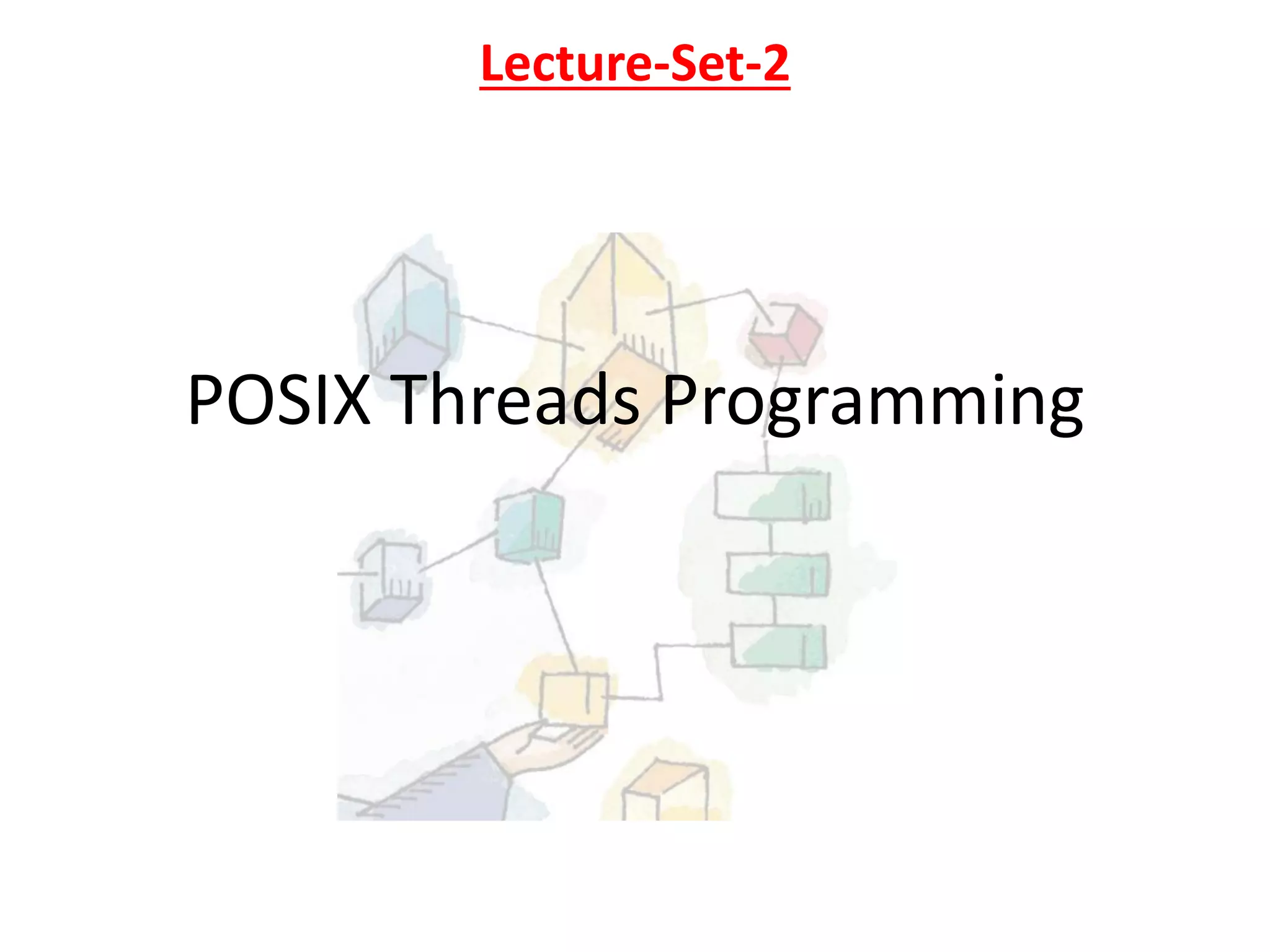
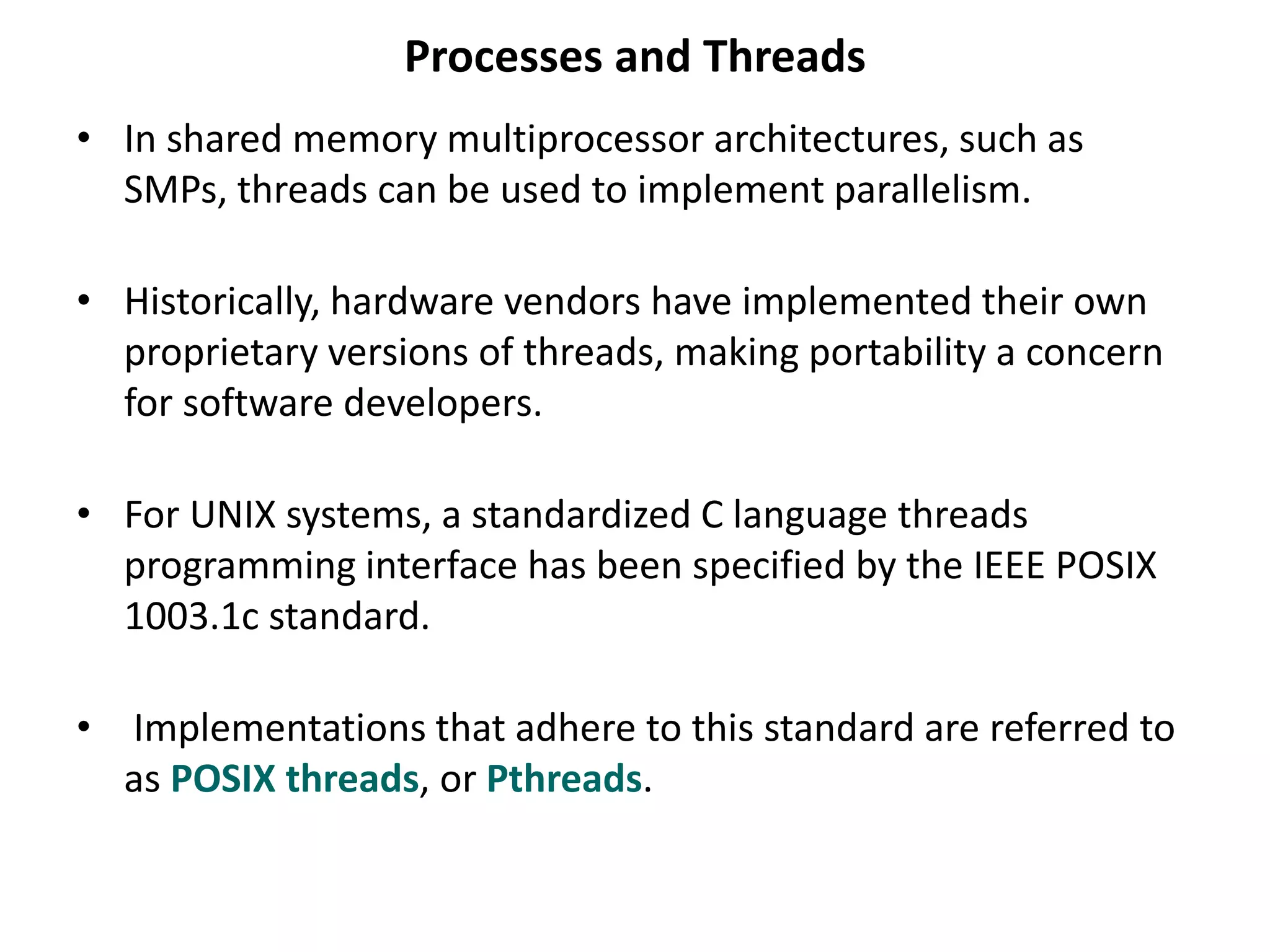





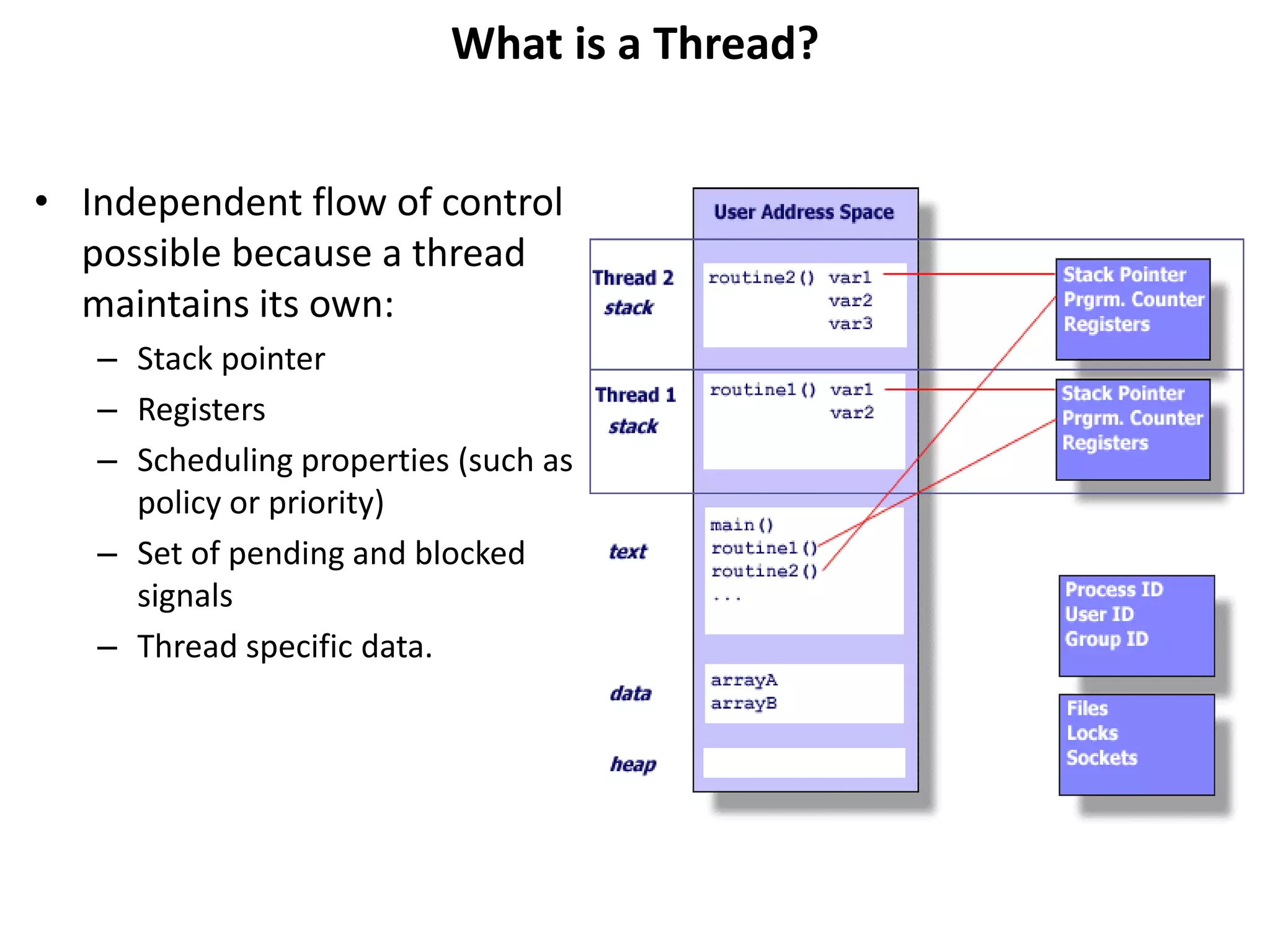
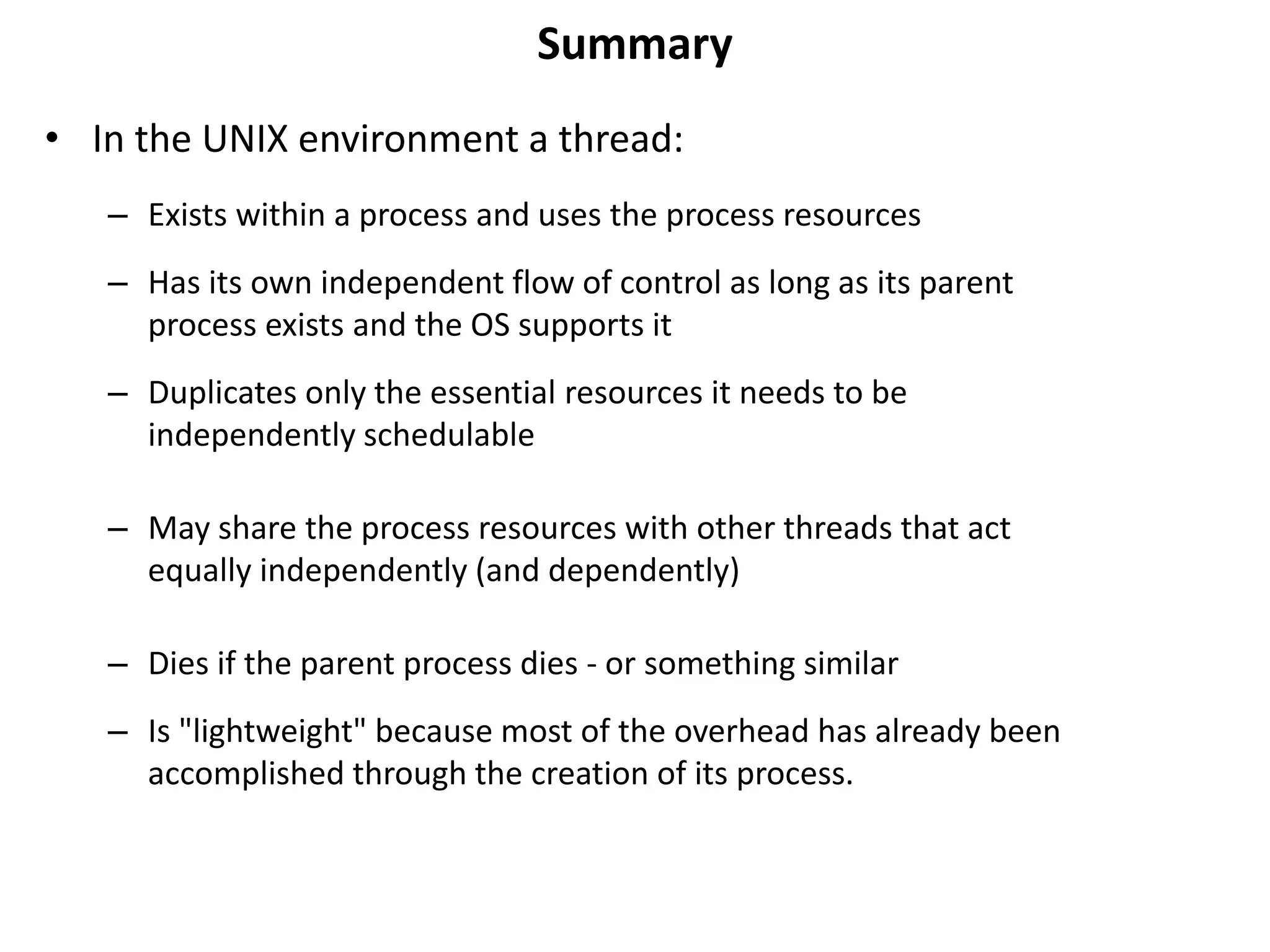
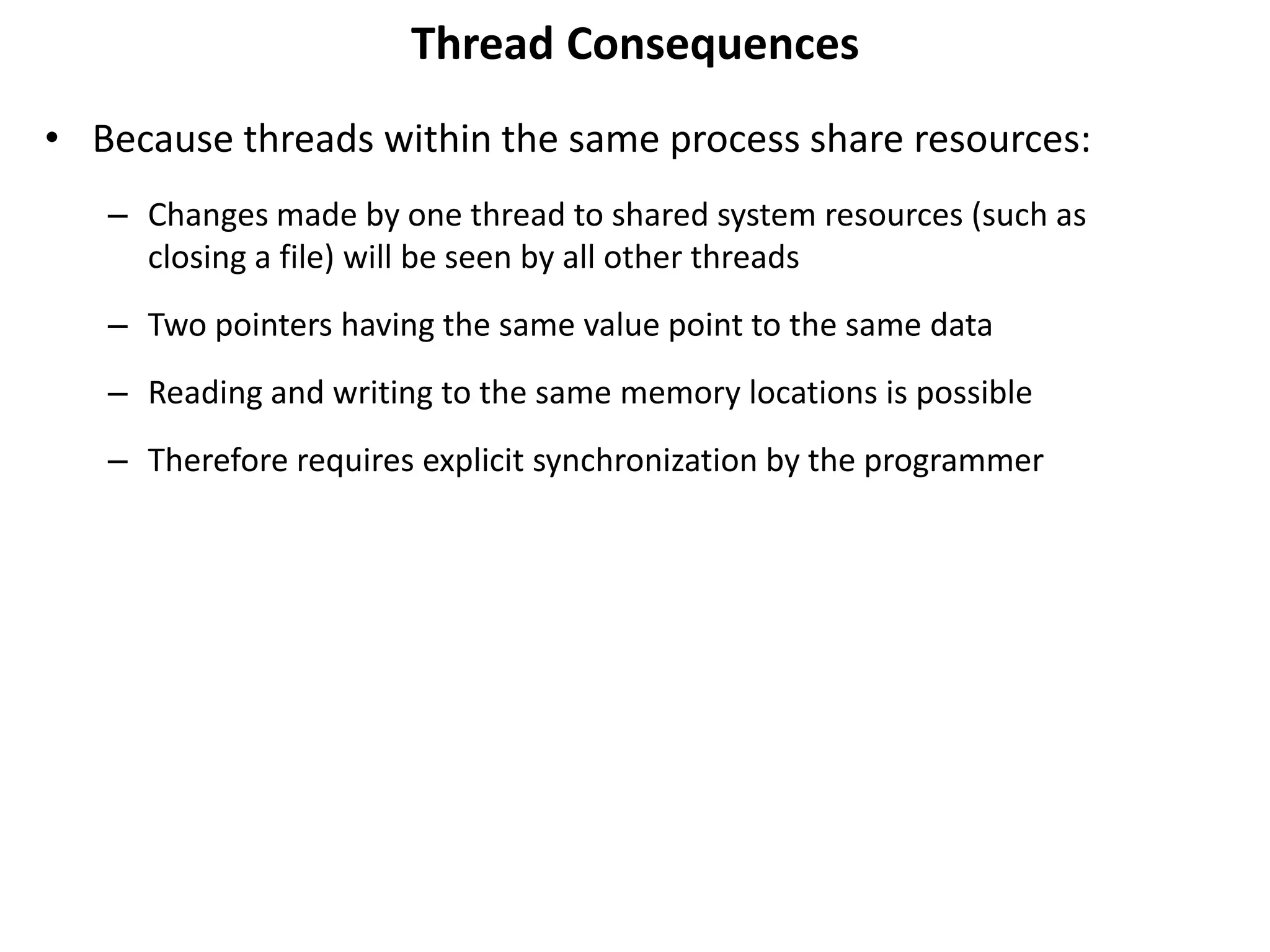



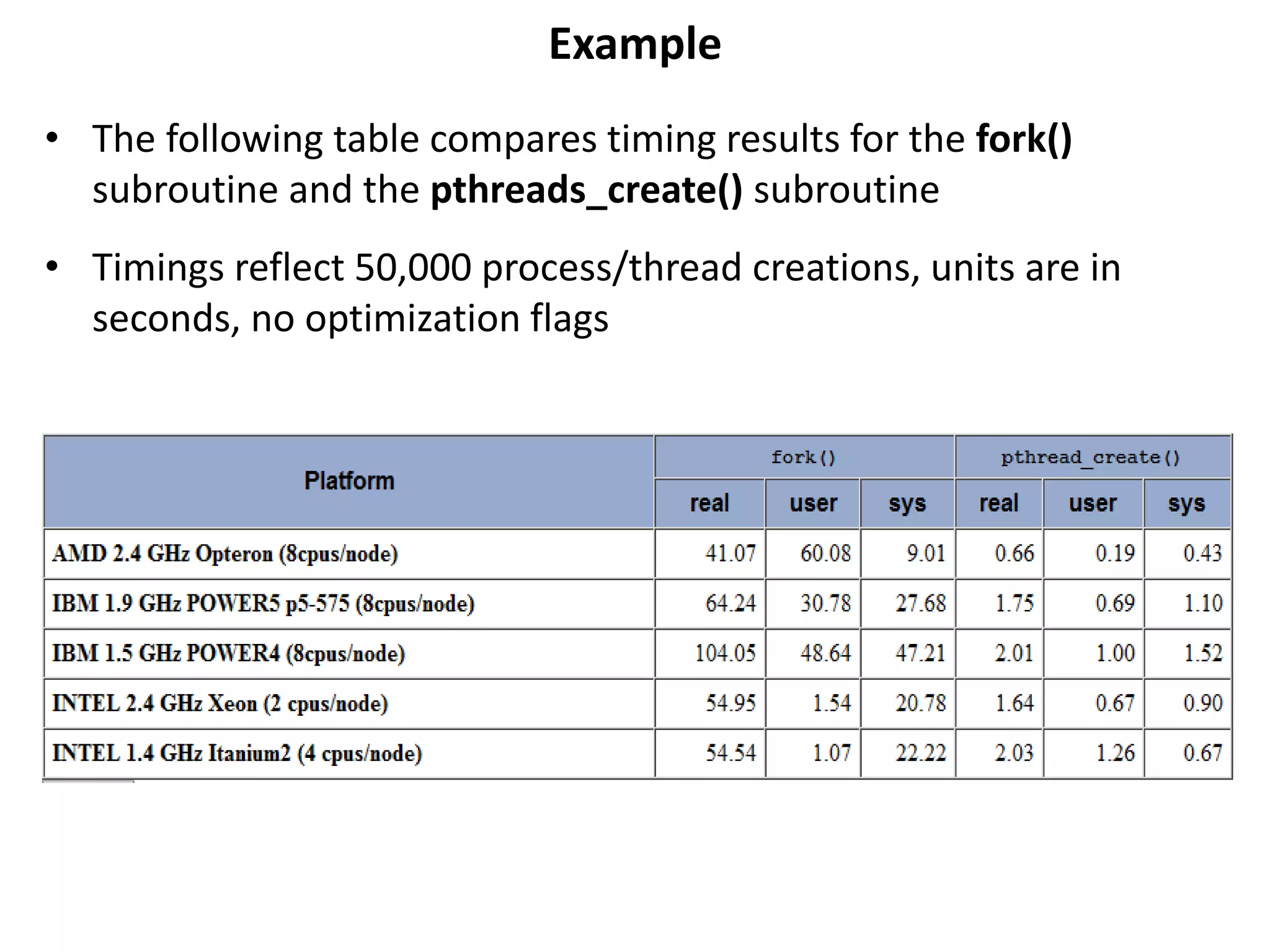




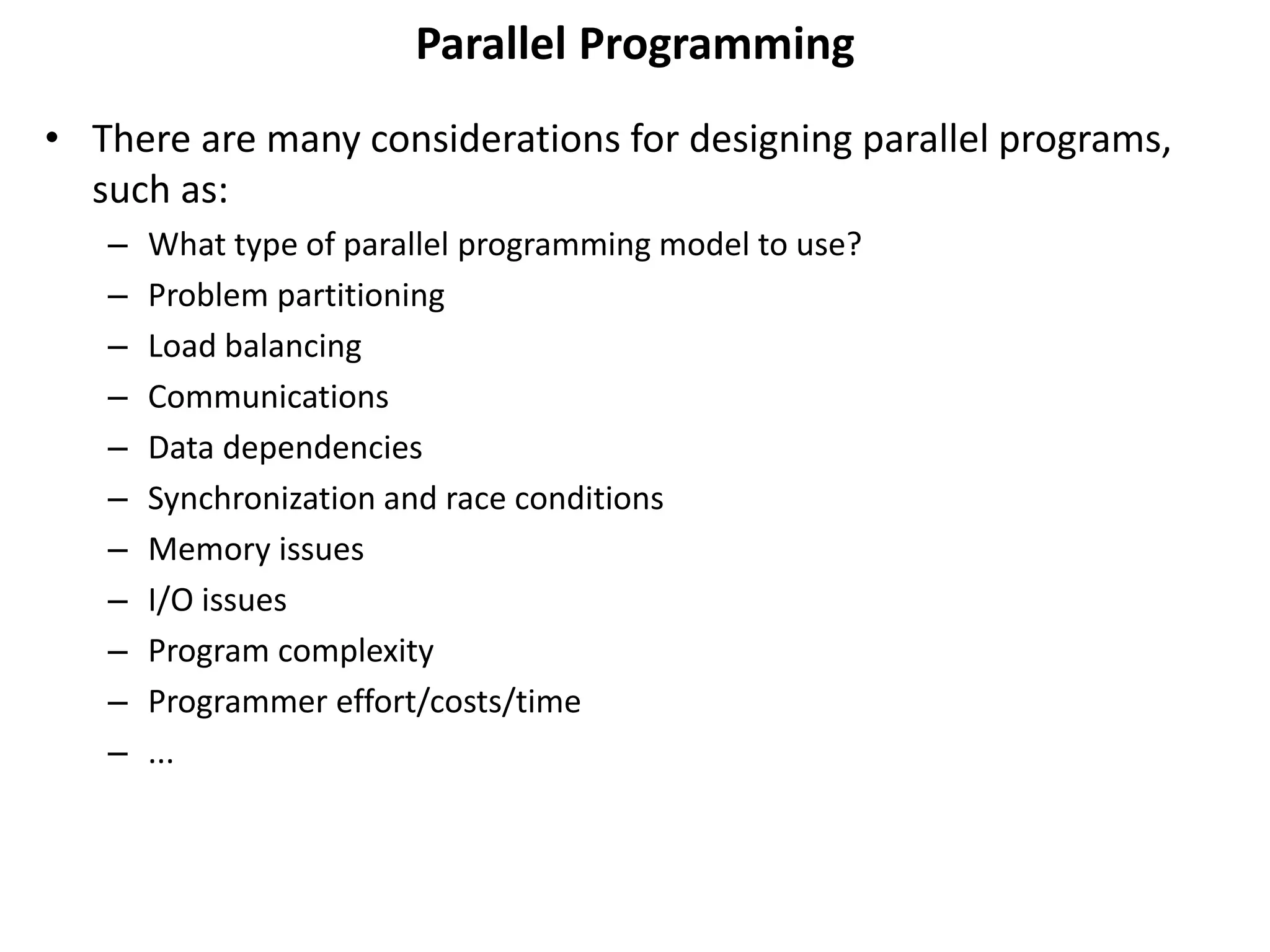


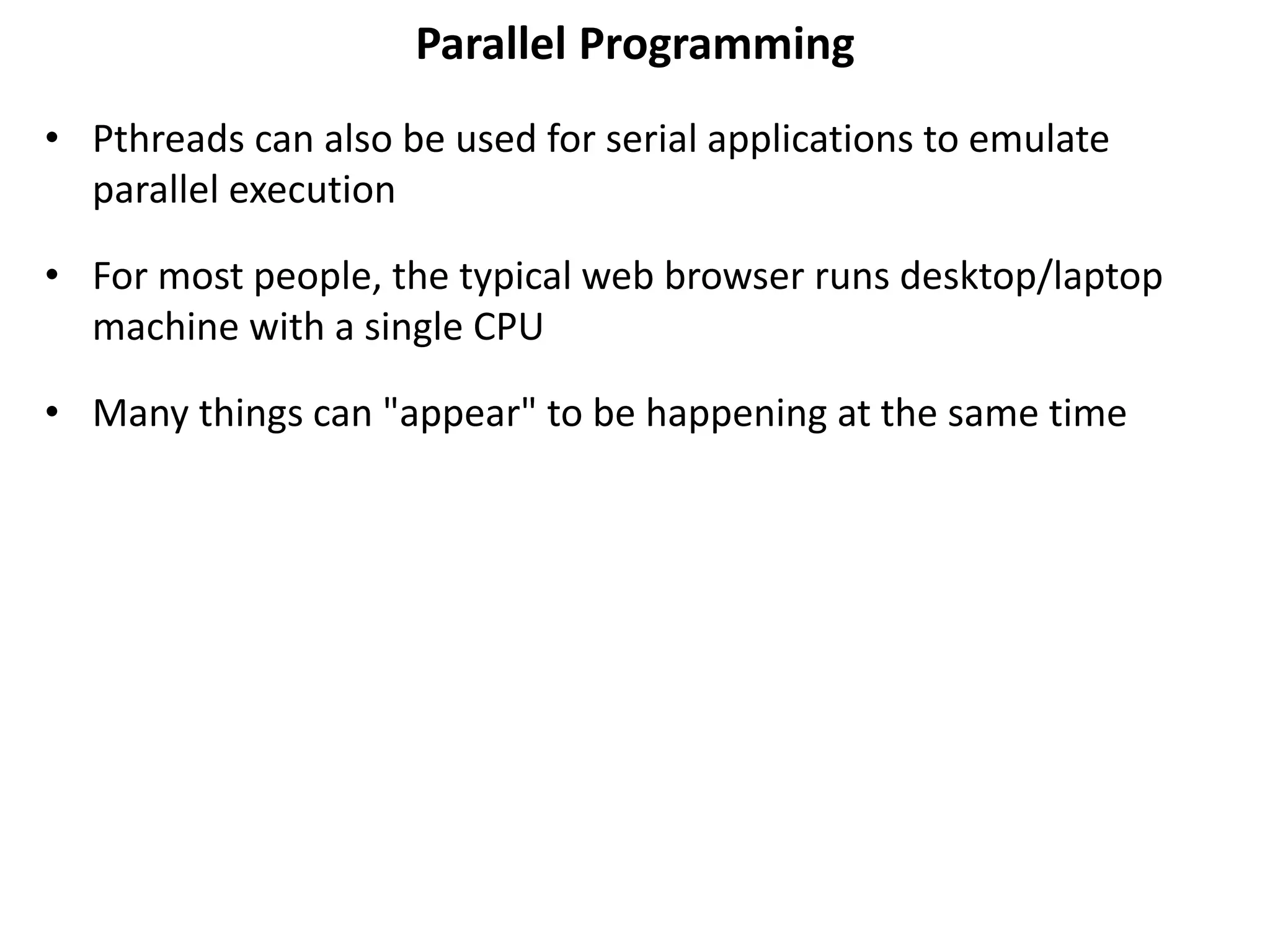










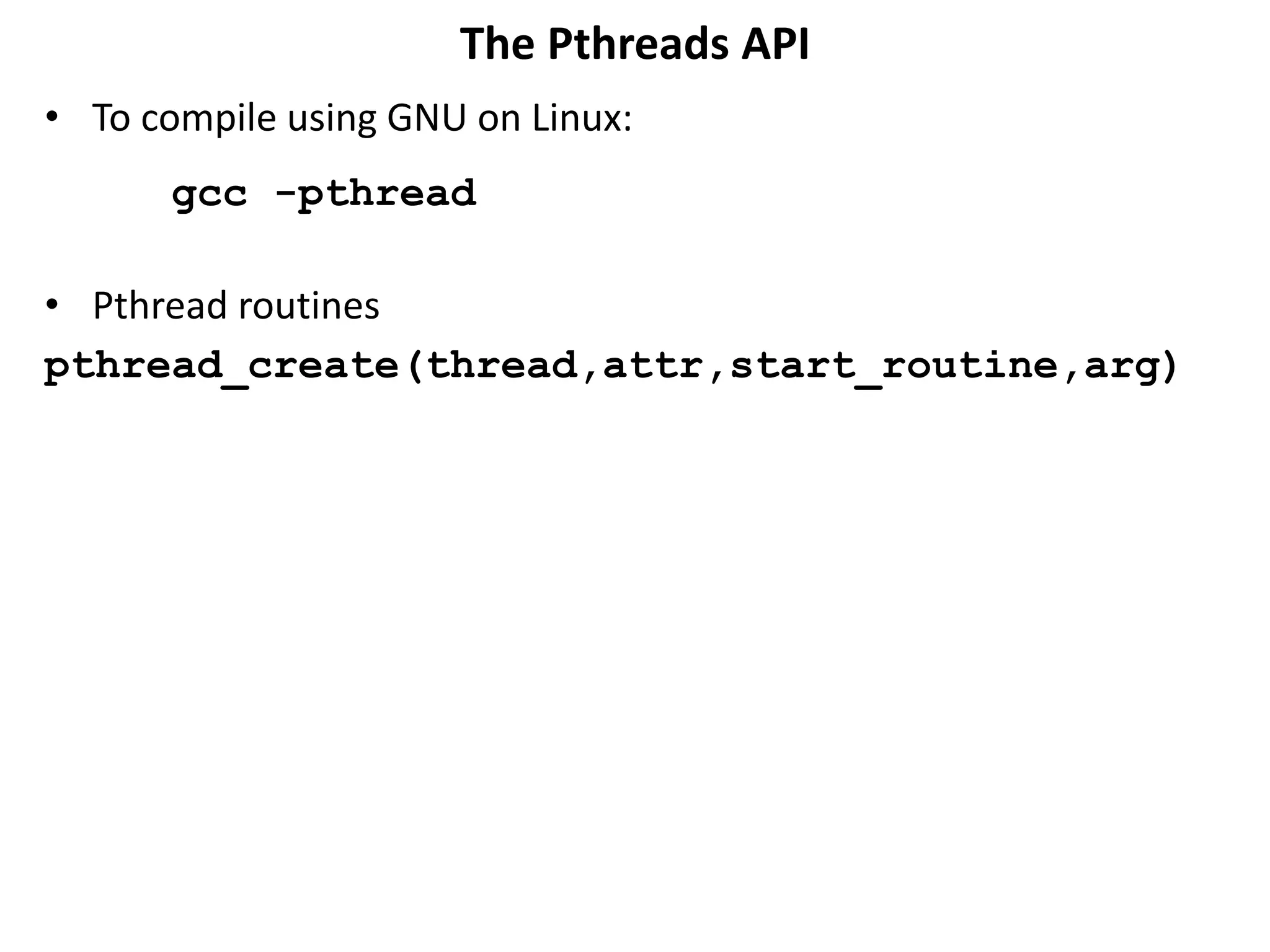
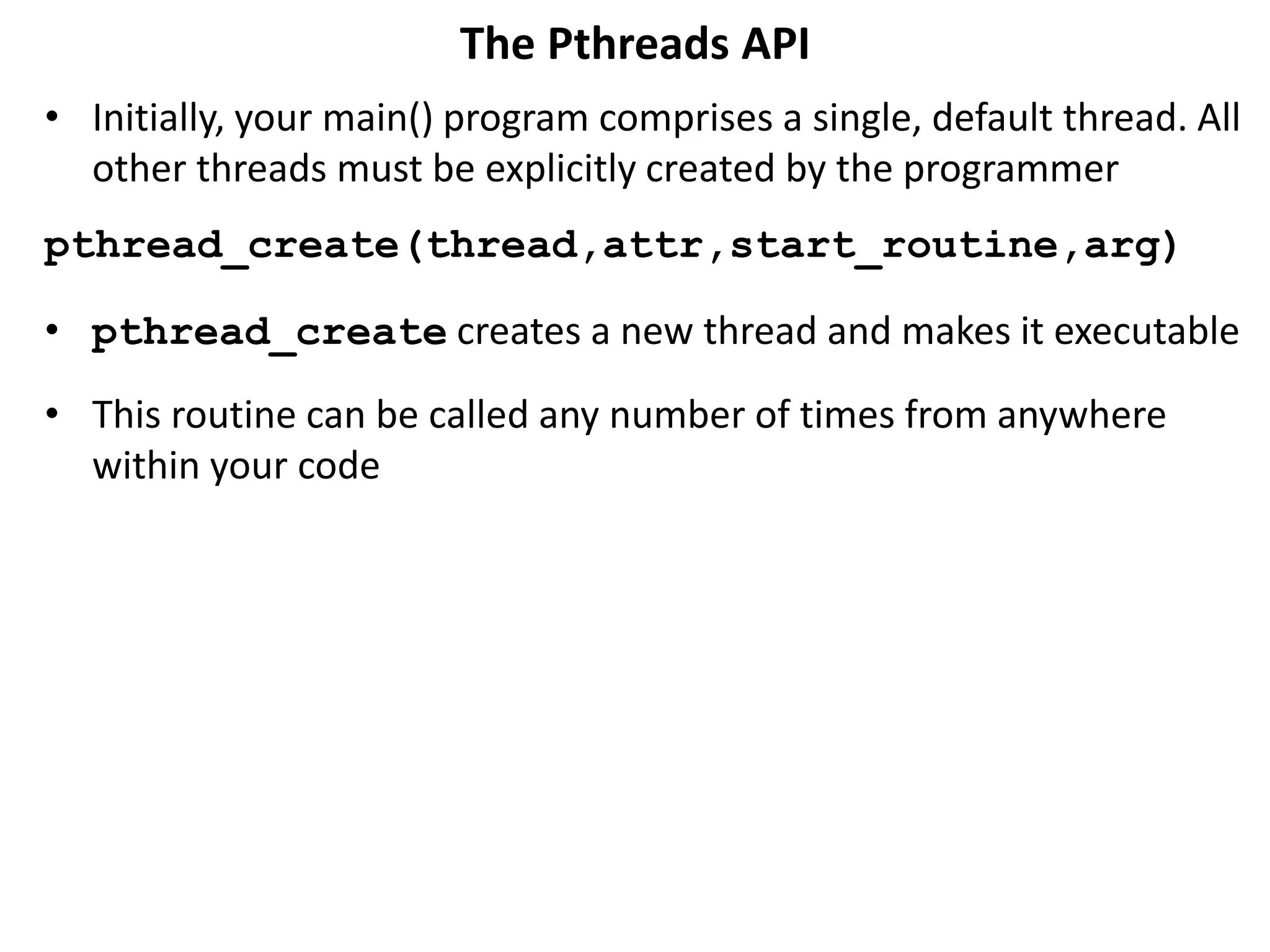


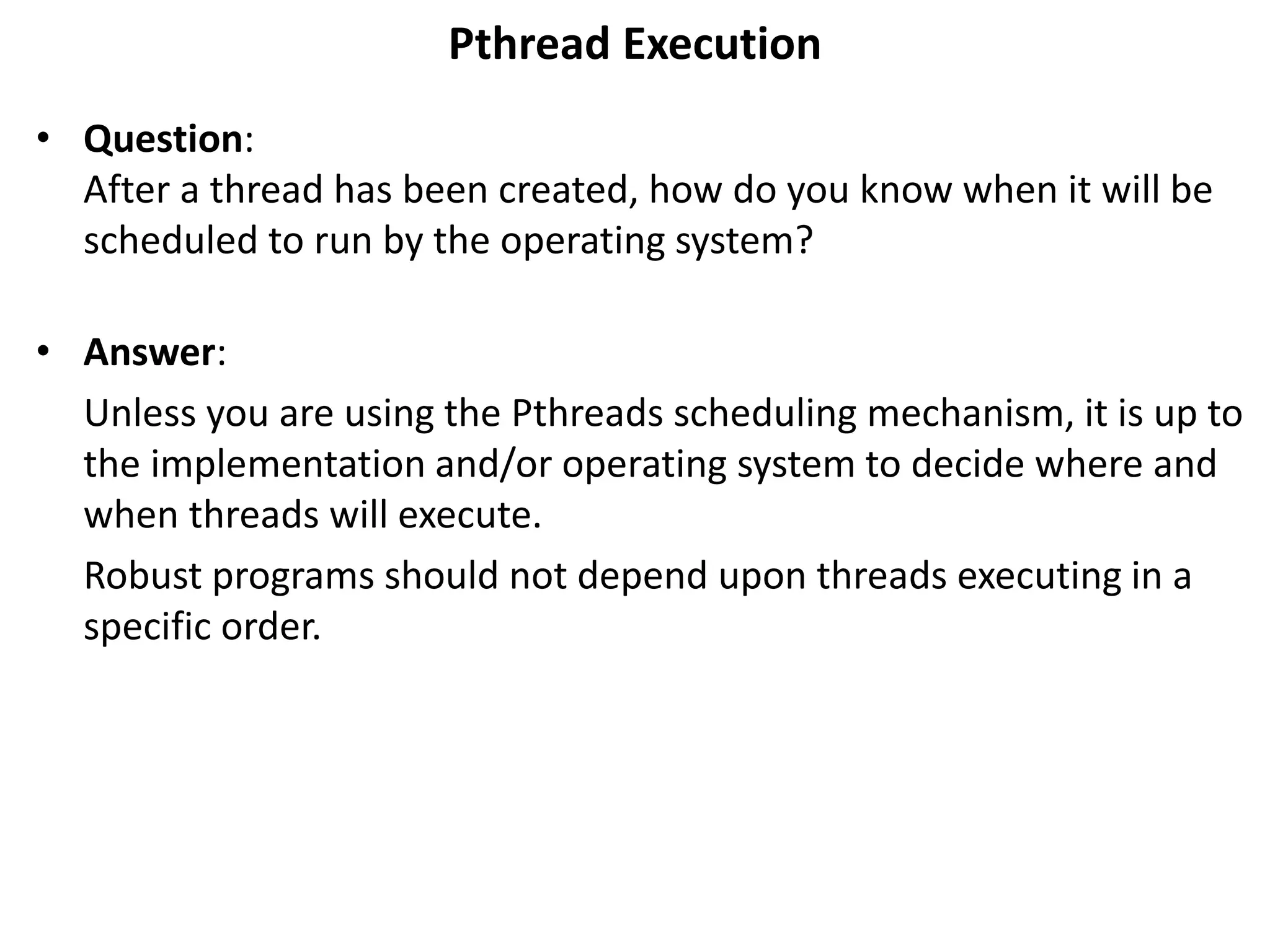



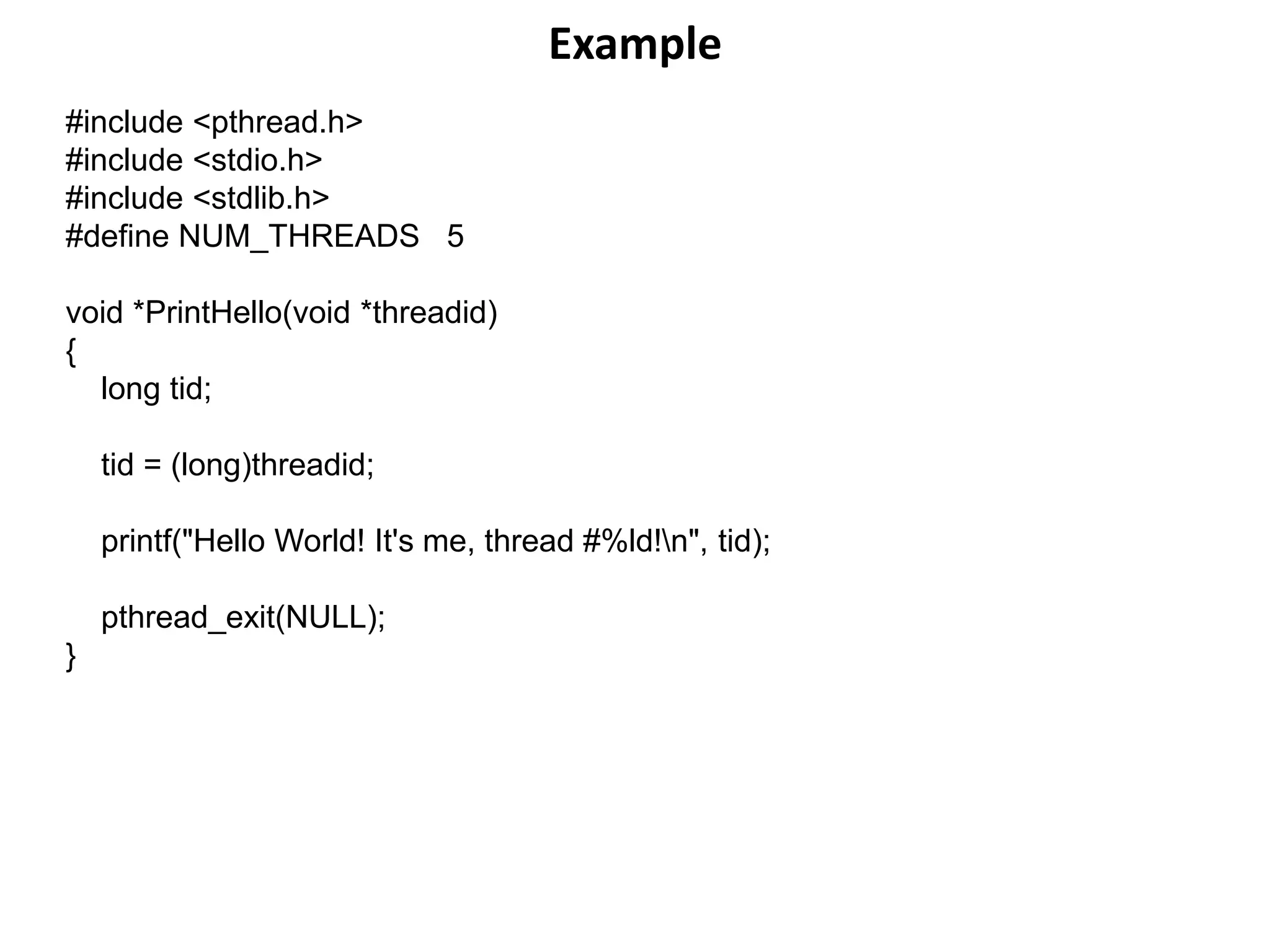
![Example
int main(int argc, char *argv[])
{
pthread_t threads[NUM_THREADS];
int rc;
long t;
for(t=0;t<NUM_THREADS;t++)
{
printf("In main: creating thread %ldn", t);
rc = pthread_create(&threads[t], NULL, PrintHello, (void *)t );
if (rc)
{
printf("ERROR; return code from pthread_create() is %dn", rc);
exit(-1);
}
}
pthread_exit(NULL);
}](https://image.slidesharecdn.com/pthread-151213045050/75/Pthread-42-2048.jpg)


![Argument Passing Example 1
#include <pthread.h>
#include <stdio.h>
#include <stdlib.h>
#define NUM_THREADS 8
char *messages[NUM_THREADS];
void *PrintHello(void *threadid)
{
int *id_ptr, taskid;
sleep(1);
id_ptr = (int *) threadid;
taskid = *id_ptr;
printf("Thread %d: %sn", taskid, messages[taskid]);
pthread_exit(NULL);
}
This code fragment demonstrates how to pass a simple integer to each thread.
The calling thread uses a unique data structure for each thread, insuring that
each thread's argument remains intact throughout the program.](https://image.slidesharecdn.com/pthread-151213045050/75/Pthread-45-2048.jpg)
![Argument Passing Example 1
int main(int argc, char *argv[])
{
pthread_t threads[NUM_THREADS];
int *taskids[NUM_THREADS];
int rc, t;
messages[0] = "English: Hello World!";
messages[1] = "French: Bonjour, le monde!";
messages[2] = "Spanish: Hola al mundo";
messages[3] = "Klingon: Nuq neH!";
messages[4] = "German: Guten Tag, Welt!";
messages[5] = "Russian: Zdravstvytye, mir!";
messages[6] = "Japan: Sekai e konnichiwa!";
messages[7] = "Latin: Orbis, te saluto!";](https://image.slidesharecdn.com/pthread-151213045050/75/Pthread-46-2048.jpg)
![Argument Passing Example 1
// main, continued
for(t=0;t<NUM_THREADS;t++) {
taskids[t] = (int *) malloc(sizeof(int));
*taskids[t] = t;
printf("Creating thread %dn", t);
rc = pthread_create(&threads[t], NULL, PrintHello, (void *) taskids[t] );
if (rc) {
printf("ERROR; return code from pthread_create() is %dn", rc);
exit(-1);
}
}
pthread_exit(NULL);
}](https://image.slidesharecdn.com/pthread-151213045050/75/Pthread-47-2048.jpg)

![Argument Passing Example 2
/******************************************************************************
* DESCRIPTION:
* A "hello world" Pthreads program which demonstrates another safe way
* to pass arguments to threads during thread creation. In this case,
* a structure is used to pass multiple arguments.
******************************************************************************/
#include <pthread.h>
#include <stdio.h>
#include <stdlib.h>
#define NUM_THREADS 8
char *messages[NUM_THREADS];
struct thread_data
{
int thread_id;
int sum;
char *message;
};
struct thread_data thread_data_array[NUM_THREADS];](https://image.slidesharecdn.com/pthread-151213045050/75/Pthread-49-2048.jpg)

![Argument Passing Example 2
int main(int argc, char *argv[])
{
pthread_t threads[NUM_THREADS];
int *taskids[NUM_THREADS];
int rc, t, sum;
sum=0;
messages[0] = "English: Hello World!";
messages[1] = "French: Bonjour, le monde!";
messages[2] = "Spanish: Hola al mundo";
messages[3] = "Klingon: Nuq neH!";
messages[4] = "German: Guten Tag, Welt!";
messages[5] = "Russian: Zdravstvytye, mir!";
messages[6] = "Japan: Sekai e konnichiwa!";
messages[7] = "Latin: Orbis, te saluto!";](https://image.slidesharecdn.com/pthread-151213045050/75/Pthread-51-2048.jpg)
![Argument Passing Example 2
// main, continued
for(t=0;t<NUM_THREADS;t++) {
sum = sum + t;
thread_data_array[t].thread_id = t;
thread_data_array[t].sum = sum;
thread_data_array[t].message = messages[t];
printf("Creating thread %dn", t);
rc = pthread_create(&threads[t], NULL, PrintHello,
(void *) &thread_data_array[t] );
if (rc) {
printf("ERROR; return code from pthread_create() is %dn", rc);
exit(-1);
}
}
pthread_exit(NULL);
}](https://image.slidesharecdn.com/pthread-151213045050/75/Pthread-52-2048.jpg)


![Example 3 - Thread Argument Passing (Incorrect)
int main(int argc, char *argv[])
{
pthread_t threads[NUM_THREADS];
int rc;
long t;
for(t=0;t<NUM_THREADS;t++) {
printf("Creating thread %ldn", t);
rc = pthread_create(&threads[t], NULL, PrintHello, (void *) &t);
if (rc) {
printf("ERROR; return code from pthread_create() is %dn", rc);
exit(-1);
}
}
pthread_exit(NULL);
}](https://image.slidesharecdn.com/pthread-151213045050/75/Pthread-55-2048.jpg)








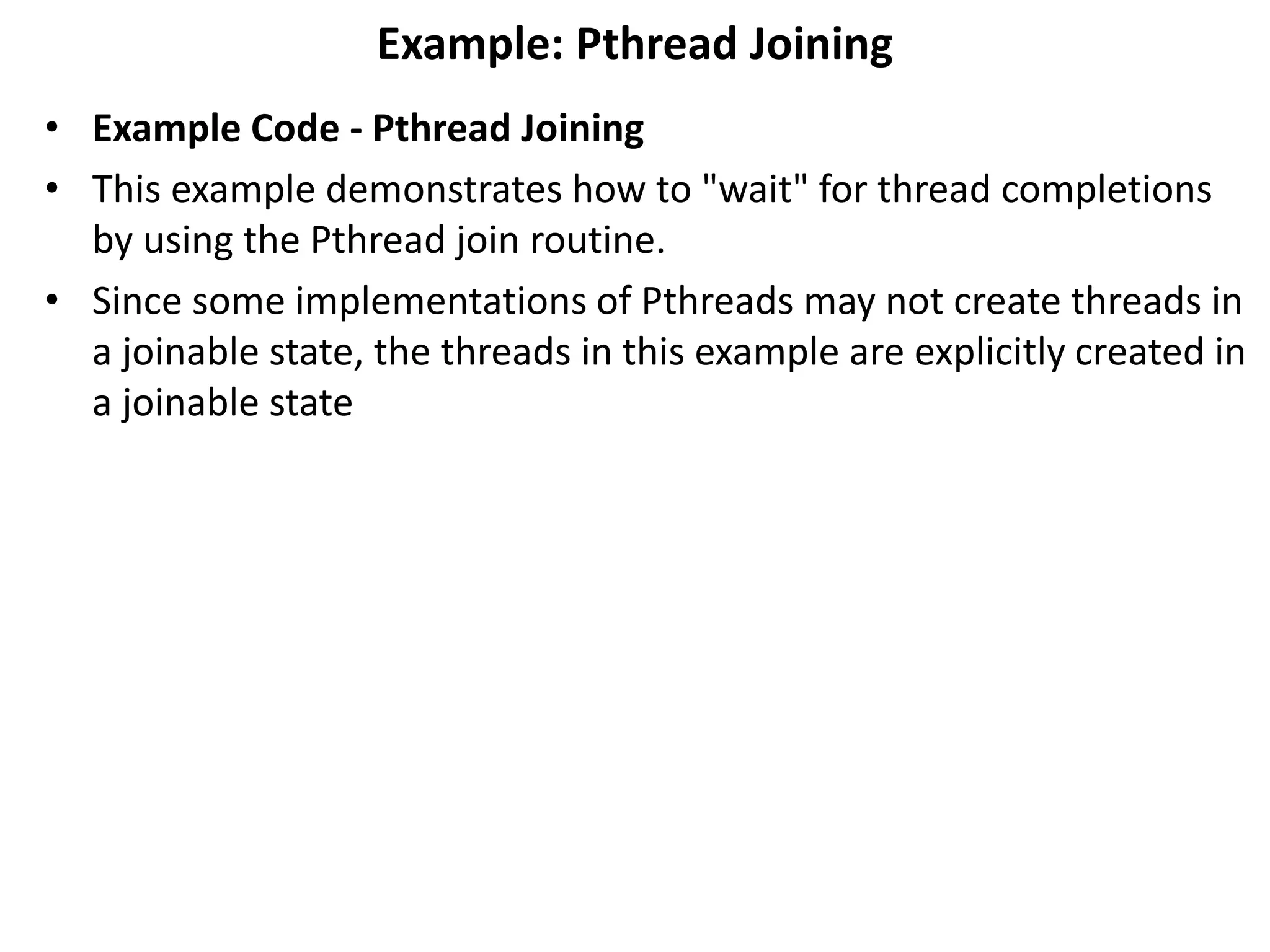
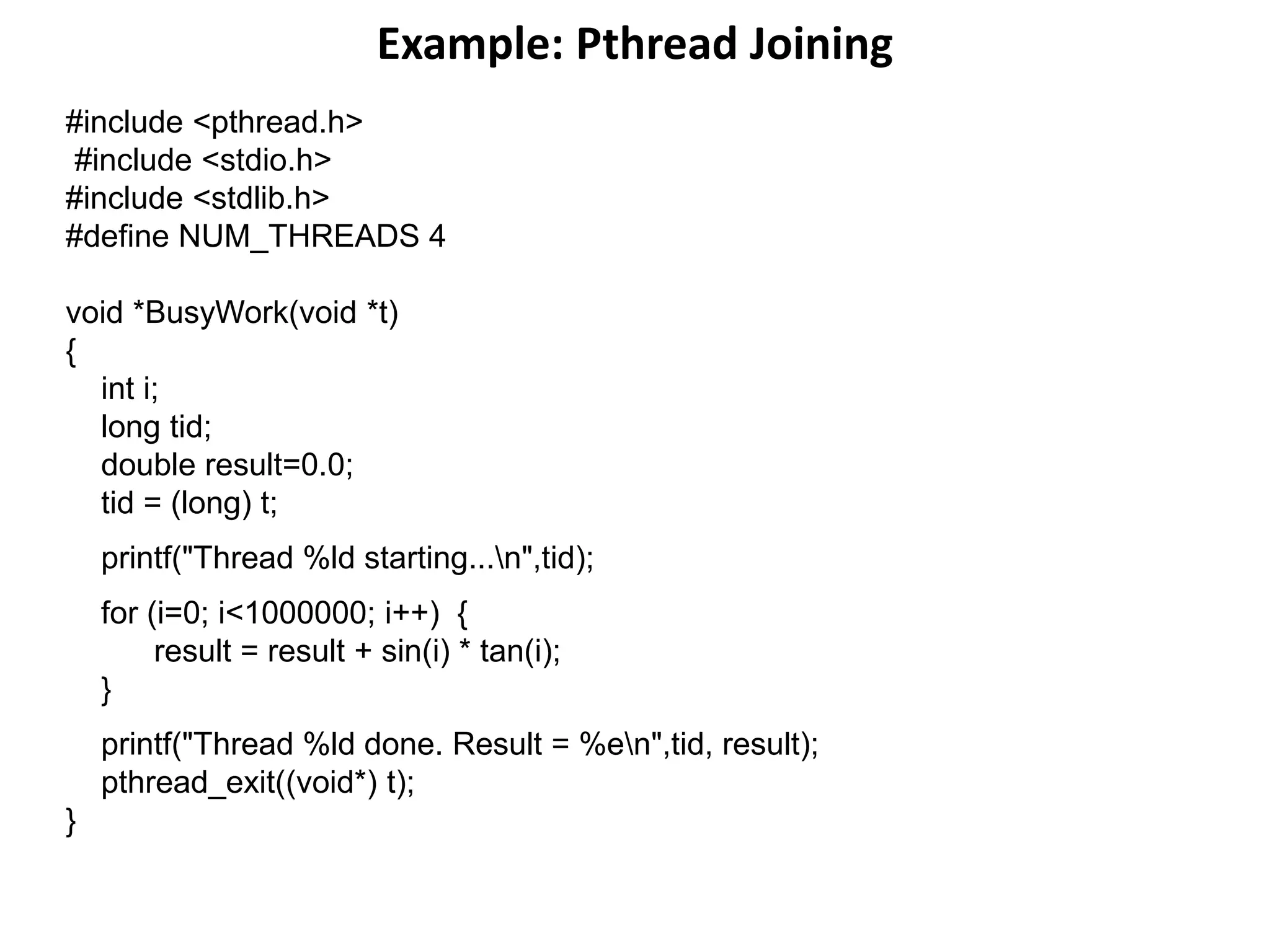
![Example: Pthread Joining
int main (int argc, char *argv[])
{
pthread_t thread[NUM_THREADS];
pthread_attr_t attr;
int rc;
long t;
void *status;
/* Initialize and set thread detached attribute */
pthread_attr_init(&attr);
pthread_attr_setdetachstate(&attr, PTHREAD_CREATE_JOINABLE);
for(t=0; t<NUM_THREADS; t++) {
printf("Main: creating thread %ldn", t);
rc = pthread_create(&thread[t], &attr, BusyWork, (void *)t);
if (rc) {
printf("ERROR; return code from pthread_create()
is %dn", rc);
exit(-1);
}
}](https://image.slidesharecdn.com/pthread-151213045050/75/Pthread-66-2048.jpg)
![Example: Pthread Joining
/* Free attribute and wait for the other threads */
pthread_attr_destroy(&attr);
for(t=0; t<NUM_THREADS; t++) {
rc = pthread_join(thread[t], &status);
if (rc) {
printf("ERROR; return code from pthread_join()
is %dn", rc);
exit(-1);
}
printf("Main: completed join with thread %ld “
”having a status of %ldn",t,(long)status);
}
printf("Main: program completed. Exiting.n");
pthread_exit(NULL);
}](https://image.slidesharecdn.com/pthread-151213045050/75/Pthread-67-2048.jpg)


